|
MEANINGFUL INTERPRETATION How To Connect Hearts And Minds To Places, Objects, And Other Resources |
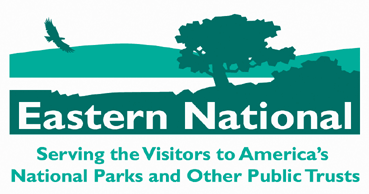
|
|
"THE ARTIST IS NOTHING WITHOUT THE GIFT, BUT THE GIFT IS NOTHING WITHOUT THE WORK." —Emile Zola
|
MAKING IT A PROCESS
Journal Questions:
To what degree is your interpretation a matter of intuition and natural talent? Give some examples.
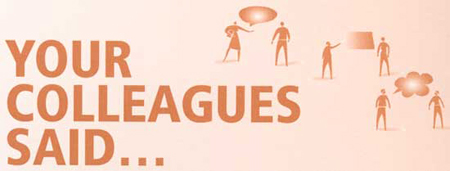 To what degree is your interpretation a matter of intuition and natural talent? |
|
"I'm fairly intuitive. I watch folks for their reactions so I can modify if necessary." |
|
"Intuition plays a role in developing my ideas. It most often happens when I'm driving to work. I'll get new insight into how to address a certain audience or develop an idea. Natural talent applies more to my delivery." |
|
"Most of my interpretation is based on intuition and natural talent. I have never had formal training. I've learned on the job what works and what doesn't." |
|
"It is intuitive, after years of trial and error." |
|
"The free-spirit aspect of my personality allows me to practice courage and creativity, which sometimes puts me half a step ahead of the audience and in a position to help them along." |
|
"Experience helps gauge audience interests. Diction, voice, eye contact and especially subject-matter knowledge are most important, but values and feelings toward the subject are important too." "I think interpreters have natural gifts, but these need to be enhanced and developed. Interpretation is an art that can be learned, but natural talent helps." |
|
"There are certain aspects of knowledge, skill, and ability that interpreters have to have. Like in any profession, many of those can be taught, but not everyone is good at it." |
|
"I don't think my interpretation is much of a real talent at all. Every aspect of my craft, from presentation style, to writing style, to facilitation techniques, to content organization has been hard-won by training, reading, trial and error, and improvement after evaluation." |
|
"THERE ARE NO SECRETS TO SUCCESS. IT IS THE RESULT OF PREPARATION, HARD WORK, AND LEARNING FROM FAILURE." —Colin Powell
|
Tangibles, Intangibles, and Universal Concepts
The key elements of any interpretive product are provided by lists of tangibles, the intangible meanings they link to, and the universal concepts that give them broad relevance. Interpreters who continually explore the relationships between the resource's tangible, intangible, and universal concepts find new ways of providing opportunities for audiences to make their own intellectual and emotional connections to meanings.

FLOWERS AND PLANTS OF NORTH AMERICA: LIBRARY OF
CONGRESS, PRINTS AND PHOTOGRAPHS DIVISION
Journal Questions:
Do some of your programs work better than others? If some consistently work better, why?
 Do some of your programs work better than others? |
|
"Yes, some do work better. The best are a fortuitous blend of just the right content combined with the best production and presentation techniques. And the best have been slowly and consistently improved over many years of evaluation and fine tuning." |
|
"Programs work best when visitors get to participate or watch a process. When visitors are included, they apply their own skills or values and compare their experiences to those of people of the past." |
|
"Some definitely work better than others. I think those I have the most interest in and enthusiasm for usually work better than others." |
|
"Programs that meet the audience's interests work best." |
|
"No, not really. All programs should ebb and flow with the audience. It also depends to some degree on my ability to seize the moment." |
|
"Every program is different and has a different audience every time — programs change." |
|
"My better programs work partly because I know the subject matter better and I have a personal experience that helps me take the audience on a journey. The more I know about the subject, the better I am at relating it to the audience's varying perceptions." |
|
"I don't know why some work better than others." |
| EXERCISE |
|
Begin a catalog of the tangible resources at your site. Brainstorm and record the intangible meanings and universal concepts to which each connects. Research the tangible resource. When you find new meanings, add them to the list and document the source. Ask your colleagues and visitors what the resource's tangibles mean to them. Add their answers to your lists. |
| ASSIGNMENT |

See Part 8 of the video, Making it a Process. |
Meanings that Are Not Universal
Just because an intangible meaning is not a universal concept does not mean it should not be interpreted. Intangible meanings that are not universal concepts are also important, but they are more accessible when they are joined with universal concepts. A well-placed universal concept establishes relevance, helping other links that have less obvious power or appeal.
An Example
An interpretive product can link a piece of broken pottery to the process of archeology. A description of the work of archeologists is relevant to those who already know and care about archeology, but will quickly become boring for the many audience members who do not. To reach those people, archeology must also be linked to universal concepts. When the product establishes the link between a potsherd and the universals of time or mystery, it "buys" audience interest and allows for a more effective presentation.
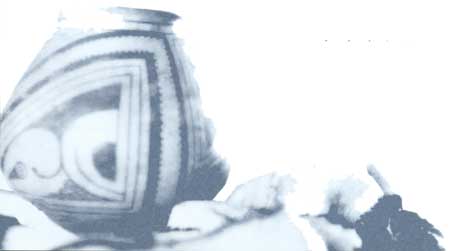
SOUTHWESTERN INDIAN POTTERY: WESTERN HISTORY/GENEALOGY
DEPARTMENT, DENVER PUBLIC LIBRARY
Another Example
(Original program Created by Bob Roney, National Park Service)
The geologic process of exfoliation might have relevance and meaning to those who are interested in earth science. Exfoliation explains why some rockslides occur and why certain features take dramatic form. An explanation of this process provides a valuable opportunity for audiences to make intellectual connections to the meanings of resources like Yosemite Valley. However, a description of the process of plate tectonics, the uplift of the earth, the effect of erosion, and the thaw and freeze of water may not relate to the experience of many visitors who would like to connect to that resource. Such explanations can easily depend on information and be overwhelming.
Yet an explanation of exfoliation can be powerful if it is coupled with links to universal concepts like change and power. The granite wall towering above the valley floor was raised from five miles below the surface to almost 3,000 feet above by immense powers over 25 million years. When the process of exfoliation breaks stone free, as happens regularly, the energy of 25 million years is released in the matter of seconds. The destruction to the forest and property beneath is astonishing.
Time, power, change, and destruction are all universal concepts. Linked to the process of exfoliation they make this aspect of geology understandable and memorable.

YOSEMITE VALLEY/HALFDOME: PHOTOGRAPHER: JEFFREY TRUST
Tangibles, Intangibles, and Universal Concepts
A tangible resource can be linked to universal concepts as well as generally less-engaging processes, systems, historical or natural contexts, and relationships. Successful interpretive products and services often use links that include universal concepts to provoke interest in resource meanings that are less conspicuous.
Example
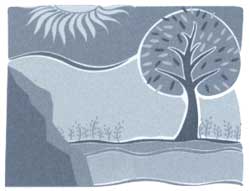
TANGIBLE
A place by a stream in Prince William Forest where the water strikes a
rocky cliff and makes a turn.
INTANGIBLE MEANING
The process of erosion
INTANGIBLE MEANING/UNIVERSAL CONCEPT
Power
HOW THEY LINK
"Which is stronger, rock or water?" The answers will provide information
on how the water dissolves the rock and the sediment carves the stream
bed.
Example
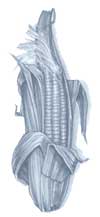
TANGIBLE
A corn cob at Mesa Verde
INTANGIBLE MEANING
System of agriculture used by the Ancestral Pueblo people
INTANGIBLE MEANING/UNIVERSAL CONCEPT
Family, community, time, religion
HOW THEY LINK
The corn represents a community of people with skills, appreciation of
beauty and spiritual beliefs. The program illustrates this with a
description of agriculture, other skills, and religious practices.
Example
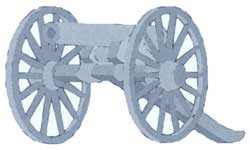
TANGIBLE
A cannon from the American Civil War
INTANGIBLE MEANING
The process and teamwork required to load and fire the cannon
INTANGIBLE MEANING/UNIVERSAL CONCEPT
Fear, confusion
HOW THEY LINK
How do soldiers overcome the fear and confusion of battle? How do they
perform their function? Answers describe the process of loading and
firing the cannon as well as how drill repetition allowed the physical
action to become automatic even in the face of terror and chaos. The
program might also present anecdotes of how and when this occurred.
Example
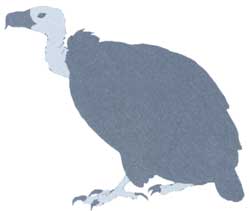
TANGIBLE
A turkey vulture
INTANGIBLE MEANING
The behavior of eating roadkill
INTANGIBLE MEANING/UNIVERSAL CONCEPT
Repulsion, death, life
HOW THEY LINK
The turkey vulture represents all organisms that consume death and
return matter to life. How could the world as we know it exist without
this function? The program might also describe the spiritual beliefs of
people who recognize a death-to-life cycle.
Example
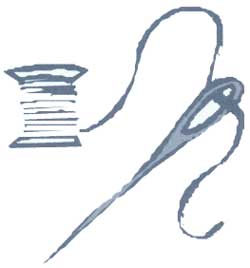
TANGIBLE
1850s white cotton shirt
INTANGIBLE MEANING
The process by which the shirt was manufactured
INTANGIBLE MEANING/UNIVERSAL CONCEPT
Oppression, exploitation, opportunity
HOW THEY LINK
The shirt represents labor. Enslaved people in the South grew and picked
the cotton. Factory workers created the cloth. Housewives and other
women in the north sewed pre-cut pieces together. The enslaved had no
choice. Factory workers and women doing piece-work were often paid very
little for hard, long hours of work. Yet some saw opportunity in their
work and hope for a better future.
Example

TANGIBLE
Acorn
INTANGIBLE MEANING
The ecosystem of which the acorn is a part
INTANGIBLE MEANING/UNIVERSAL CONCEPT
Time
HOW THEY LINK
The acorn carries DNA from the past into the future. The acorn
represents the forest of the past and its ecosystem and people. The
acorn represents the forest of the present, its ecosystem and people.
Finally the acorn also represents the forest of the future. What will
that ecosystem be like and how will people interact with it?
| EXERCISE |

Look at your lists of tangibles, intangible meanings, and universal concepts. What links that use universal concepts can be joined with intangible meanings that have less relevance? What interpretive treatment might join them? How can you present them to capture the audience's interest enough that they learn about or feel differently about the meanings of the resource? |
|
"IN CREATING, THE ONLY HARD THING IS TO BEGIN: A GRASS BLADE'S NO EASIER TO MAKE THAN AN OAK." —James Russel Lowell
|
| RESEARCH TOOL |

Tangibles, intangibles, and universal concepts are research tools. When reading or talking about a subject, stop each time you make a personal intellectual or emotional connection. Identify the tangible the author refers to, the intangible meanings it connects to, and the universal concepts that make it relevant to you. You will likely find more ideas for interpretive programs. |
EXAMPLE 1
Of Fear and Choice
Andrea Dunstan, U.S. Fish and Wildlife Service
After waking up yet again to the sound of crunching overhead I asked my husband, "Which do you prefer? Mice gnawing on the wood and wires, or encountering a loose snake in the house?" He gave a start. He knew where I was heading (I raise rat snakes). "You know my answer," he said. Yes, I did. A mouse, however annoying or destructive was and will always be preferable over any encounter with a snake. My husband is in the majority. For most people snakes are about fear.
That reaction is not inherent. Studies show that, when approached with a snake, very young children are not afraid, just curious. So where does fear come from? Scientists maintain it is a learned response. As people grow, they are taught many things. First impressions come from home and family.
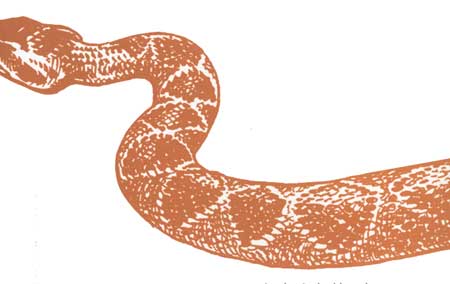
How many times have I heard the phrase "the only good snake is a dead snake"? Lives are bombarded with negative snake images. The serpent in the Garden of Eden is not only sneaky and tempting, but is also blamed for the fall of mankind. In Greek mythology Medusa, with snakes for hair, can turn a person to stone with just a look. And Hollywood is a master at making these quiet and secretive critters vindictive man-hunters.
Amazingly, more people are struck by lighting every year than are bitten by venomous snakes. Of the poisonous snake bites recorded each year, 90% occur when the person is trying to kill or harass the snake. Generally, snakes are beneficial and non-threatening to humans. They are both shy and sensitive. People don't often think of snakes this way because they usually see snakes exposed and threatened. Think about it, who is more afraid at the moment of encounter, human or snake? Who looms over whom? Given a chance, most snakes will retreat to safety.
Significant declines in several snake populations occurred in the last ten years. Such declines may be caused by natural predation, indirect poisoning, and habitat destruction. But the underlying cause is the human fear of slithering serpents.
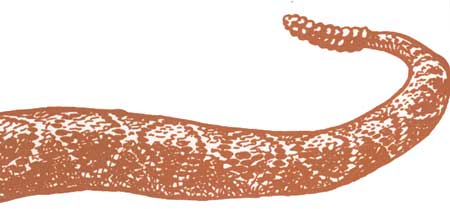
Throughout history, two trends are clear: 1) Humans tend to destroy that which they fear; 2) Humans fear what they don't understand. The loss of snakes may not seem important just now, but what about in the future? Will rodents get out of control? Will rodent-borne diseases increase? Nobody knows. If people could consider their fear, perhaps the decline in most snake populations could be slowed or even stopped.
Every day we face choices and fears that impact more than our own future. In the case of my husband and mice? Well, about two weeks later I caught him poking at a pile of laundry with a shoe and asked him what he was doing. He replied, looking rather sheepish, "I thought I saw something move, and I haven't heard any mice lately I know we agreed not to use poison. You didn't let a snake loose to kill the mice did you?" I had to smile at his relief when I said "No. I did not let a snake loose in the house this time. I put a sonic rodent repellent in the attic."
What are the tangibles, icon, intangible meanings, and universal concepts? How does the essay use universal concepts to explore less relevant intangible meanings?
Example
TANGIBLE
This essay wants the reader to care more about snakes
ICON
Snakes
INTANGIBLE MEANINGS
Fear, imagination, ways children learn, preservation, snake behavior,
choice, self-examination, husband and wife relationships
UNIVERSAL CONCEPT
Fear is likely the strongest
HOW UNIVERSAL CONCEPTS LINK TO OTHER MEANINGS
The essay empathetically describes, explains, and questions human fear,
and is thus able to develop the meanings of snake behavior and
preservation.
|
"A MAN WHO WORKS WITH HIS HANDS IS A LABORER; A MAN WHO WORKS WITH HIS HANDS AND HIS BRAIN IS A CRAFTSMAN; BUT A MAN WHO WORKS WITH HIS HANDS AND HIS BRAIN AND HIS HEART IS AN ARTIST." —Louis Niger
|
EXAMPLE 2
An Ordinary Piece of Rock
Frank Sierra, U.S. Fish and Wildlife Service
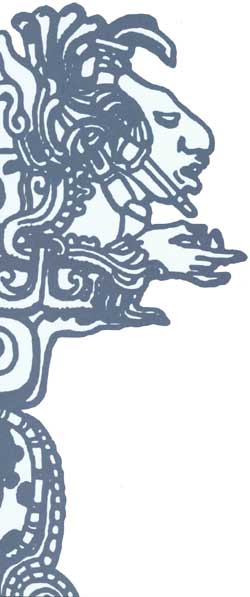
At first it looks like an ordinary piece of rock encrusted with mud. But expert hands remove the earth from its form and the archeologist sees this is not an everyday find. The ground releases a symbol of divinity from an age gone by.
After careful cleaning the carving, placed on a table for study and analysis, stands like a little green man from space, gazing coldly forward. It's been centuries since the light and the warmth of the sun has bathed his face.
Shaped of precious jade and only several inches high, he once beheld a glorious civilization. His expression is mute, but powerful. This quiet sentinel is as ancient as time itself — a survivor and testament to a people long past. What has he seen? What wonders of ancient Aztec civilization did he witness? Perhaps he smells maize or chilies roasting over charcoal embers. Maybe he hears the throaty roar of voices raised in wild approval at the daily spectacle of human hearts ripped from still-breathing sacrifices honoring the sun god, Quetzalcoatl.
He has traveled through time, and now gazes serenely at us. Surely he'll spend years in a museum, but will his travels cease with our modern success? What if our ways change and our buildings tumble? Will another set of expert hands free him again as they wonder about what he saw in our times?
What are the tangibles, icon, intangible meanings, and universal concepts? How does the essay use universal concepts to explore less relevant intangible meanings?
Example
TANGIBLE
The essay asks the reader to care about a specific artifact, artifacts
and ruins in general, and an ancient people.
ICON
A specific stone carving
INTANGIBLE MEANING
Archeology ancient time, modern time, the future, life in the past,
human sacrifice, survival of civilizations
UNIVERSAL CONCEPT
Time, survival
HOW UNIVERSAL CONCEPTS LINK TO OTHER MEANINGS
The essay uses the carving as a witness of time, the past, present, and
future, and to explore the meanings of archeology.
|
"TO THINK IS EASY. TO ACT IS DIFFICULT. TO ACT AS ONE THINKS IS MOST DIFFICULT OF ALL." —Dalai Lama
|
EXAMPLE 3
A Time to Choose
David L. Larsen, National Park Service
In early September 1862, the American Civil War was technically not about slavery. Of course many people, northern and southern, white and African American, cared passionately about the subject and understood things might change. But officially, the North waged a war for reunification and a Union that sanctioned the right to own human's as property.
On September 15, 1862, 12,500 Union troops surrendered to Confederates at Harpers Ferry, Virginia. Most southern forces left the scene of their victory quickly, marching to fight the Battle of Antietam, 17 miles away and two days later.
Even though they had surrendered, things looked pretty good for the 12,500 Union troops. Paroles were common at that stage of the war. A prisoner signed a piece of paper promising not to fight again and was sent home until officials from both sides formally exchanged imaginary prisoners. It was an honor system that saved resources for both sides. At Harpers Ferry, in September, the process moved quickly. Enlisted Union troops surrendered their weapons, but officers were allowed to keep their sidearms.
Colonel Trimble, the 60th Ohio Volunteer Infantry Regiment's commander, was concerned about a number of African Americans who worked as servants and teamsters for his regiment. Confederates were rounding up hundreds of contrabands or runaway enslaved people. Hundreds of contrabands left their bondage for the protection of the Union army at Harpers Ferry.
In 1862 these blacks cooked, labored, scouted, spied, and provided other support for the United States military. Most of these African-Americans, like countless others all over the South, saw the war as an opportunity to end slavery. But the African Americans working for Trimble's regiment were not runaways, they were free people from Ohio.
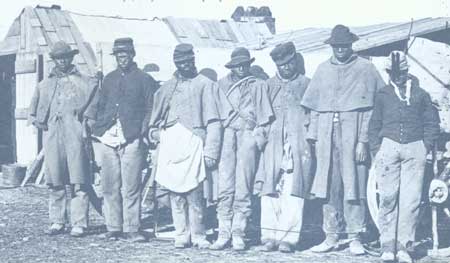
AFRICAN AMERICAN TEAMSTERS:
AFRICAN-AMERICANS AND THE CIVIL WAR: LIBRARY OF CONGRESS, PRINTS AND
PHOTOGRAPHS DIVISION
The Confederates were sending African Americans captured in Harpers Ferry back to slavery. Colonel Trimble wanted to protect the free blacks from Ohio and approached Confederate General A.P. Hill. Hill issued passes to the free African Americans, and the issue seemed settled.
On the morning of September 16, Trimble and the 60th Ohio prepared to march across a pontoon bridge into Maryland. A Confederate cavalry squad was stationed there to keep things orderly and insure that no blacks slipped across with the Union troops. Trimble showed the Confederates General Hill's passes for the Ohio free blacks. Maybe the Confederate soldiers thought the passes forged, but for whatever reason they refused to allow the African Americans to pass.
Colonel Trimble responded by reaching into his holster, drawing his revolver, and holding the Confederate officer at gunpoint until the entire 60th, including the African Americans, were across the river. No one knows Trimble's motives. Perhaps he was an abolitionist, perhaps felt some special duty to those blacks, was tired of losing, or simply hated the Confederates.
In any case, Colonel Trimble's stand on the Potomac River represents countless such incidents in which individuals — African American and white — had to make choices about status, race, and slavery. The war was indeed changing. Just a week later, after the Battle of Antietam, Abraham Lincoln issued the Preliminary Emancipation Proclamation. Some thought Union troops would not support Lincoln's actions and might even throw down their weapons and go home rather than fight a war against slavery.
But they did not.
Indeed there was much grumbling. But enough African Americans took freedom into their own hands, proclaimed their humanity, and confronted white officers like Trimble. These confrontations and moral dilemmas helped make the war something else.
As messy, corrupt, tragic and immoral as the war would continue to be, it was now a war about freedom.

AFRICAN-AMERICAN OFFICER:
AFRICAN-AMERICANS AND THE CIVIL WAR: LIBRARY OF CONGRESS, PRINTS AND
PHOTOGRAPHS DIVISION
What are the tangibles, icon, intangible meanings, and universal concepts? How does the essay use universal concepts to explore less relevant intangible meanings?
Example
TANGIBLE
The essay wants the audience to care about Harpers Ferry, the event,
Colonel Trimble, African Americans and Union officers in general, and one of the
ways the Civil War became the war the destroyed slavery.
ICON
It's possible to describe the icon in the essay at least two ways. Some
might say that Colonel Trimble is used to focus the moral choices of many Union
officers. To others the event of Trimble's confrontation with the Confederates represents larger
questions.
INTANGIBLE MEANINGS
Freedom, injustice, contraband, war, choice, motivations for war,
abolitionism, African-American freedom, African-American contributions
to the Union war effort, bravery, the parole system, the idea that
individual actions add up to larger consequences, change in the focus of
the war.
UNIVERSAL CONCEPT
Freedom, bravery, choice, injustice, change
HOW UNIVERSAL CONCEPTS LINK TO OTHER MEANINGS
The essay used Colonel Trimble's choice to represent choices of many
African-Americans and Union officers. Their decisions helped the Union
place more emphasis on the freedom of enslaved people. These universal
concepts, choice, change, and freedom also allowed for an explanation of
the parole system and the term contrabands.
|
"NO HORSE GETS ANYWHERE UNTIL HARNESSED. NO STREAM OR GAS EVER DRIVES ANYTHING UNTIL IT'S CONFINED. NO NIAGARA EVER TURNS LIGHT AND POWER UNTIL IT IS TUNNELED. NO LIFE EVER GROWS GREAT UNTIL IT'S FOCUSED, DEDICATED, DISCIPLINED." —Henry Emerson Fosdick
|
Opportunities for Connections to Meanings
Tangible/intangible links are interpretation's basic unit. But a link by itself only indicates a relationship between the tangible resource and one of its meanings. It's not enough for an interpretive talk to say condor/endangered, condor/adaptation, condor/recovery, condor/wildness, condor/hope, condor/survival. An effective interpretive talk develops each relationship or link to provide an opportunity for the audience to make connections to those meanings.
Methods of delivery develop tangible/intangible links into opportunities.
Many methods can deliver a tangible/intangible link. These are just a few:
STORIES • EXPLANATIONS • EXAMPLES • PRESENTATION OF EVIDENCE • QUOTES • METAPHORS • ANALOGIES • ACTIVITIES • SEQUENCES OF QUESTIONS • DISCUSSIONS • DESCRIPTIONS • DEMONSTRATIONS • COMPARISONS • ILLUSTRATIONS
Here again is Example 2 from page 136 with a sample analysis of delivery methods used to develop tangible/intangible links. The analysis follows each paragraph in italics.
An Ordinary Piece of Rock
Frank Sierra, U.S. Fish and Wildlife Service
At first it looks like an ordinary piece of rock encrusted with mud. But expert hands remove the earth from its form and the archeologist sees this is not an everyday find. The ground releases a symbol of divinity from an age gone by.
The first paragraph uses description to link the artifact to archeology and the past.
After careful cleaning the carving placed on a table for study and analysis stands like a little green man from space, gazing coldly forward. It's been centuries since the light and the warmth of the sun has bathed his face.
The second paragraph personifies the object and further links it to archeology and the past.
Shaped of precious jade and only several inches high, he once beheld a glorious civilization. His expression is mute, but powerful. This quiet sentinel is as ancient as time itself — a survivor and testament to a people long past. What has he seen?
What wonders of ancient Aztec civilization did he witness? Perhaps he smells maize or chilies roasting over charcoal embers. Maybe he hears the throaty roar of voices raised in wild approval at the daily spectacle of human hearts ripped from still-breathing sacrifices honoring the sun god, Quetzalcotl.
The third paragraph again uses the delivery method of description to explore the world of ancient peoples. It also introduces the metaphor of the artifact as a witness to time.
He has traveled through time, and now gazes serenely at us. Surely he'll spend years in a museum, but will his travels cease with our modern success? What if our ways change and our buildings tumble? Will another set of expert hands free him again as they wonder about what he saw in our times?
The last paragraph elaborates on the witness-to-time metaphor to link the artifact to the present and the future. It also uses the rhetorical question delivery method to link the object to the survival of this civilization.
| EXERCISE |

Read the other examples of interpretive writing in this section (pages 132 and 138) and identify the methods of delivery each essay uses to develop its tangible/intangible links. |
|
"WELL DONE IS BETTER THAN WELL SAID." —Benjamin Franklin
|
Intuition Verses a System
It's impossible to confine creativity and interpretation within a single method. Each interpreter appropriately has his or her own approaches, inspiration, and style. It's important though, that each interpretive product be as professional, precise, and effective as it possibly can. A process, system, and method of analysis can help products that begin intuitively become stronger.
Journal Questions:
Would it change your products if you applied the tools of tangibles, intangibles, and universal concepts? How?
 Would it change your products if you applied the tools of tangibles, intangibles, and universal concepts? How? |
|
"I expect my programs to become significantly more powerful." |
|
"Yes, I think my programs will become more well rounded and complete. I think these tools will help me be more creative as well." |
|
"These tools will center and focus my thoughts so I don't jump around as much. I think as I spend more time considering what I might say my products will get better." |
|
"Yes it would change my programs. It would provide more structure and increase purpose for why and how I present specific items to visitors." |
|
"I think more visitors will leave my programs with a better idea of how they resource is valuable to them." |
|
"Yes. Talking about the essence of life puts me out on a limb, but it also relieves me of the responsibility of teaching. My visitors no longer memorize my information. Instead, they make a connection to the resource." |
|
"I already apply these tools to the best of my current ability. However I find that as I work with such tools, they become more comfortable and provide ever better opportunities to help visitors care about the resource." |
| EXERCISE |

Read The Interpretive Process Model and develop an interpretive product using that system. |
| <<< Previous | <<< Contents>>> | Next >>> |
meaningful_interpretation/mi6j.htm
Last Updated: 29-May-2008
Meaningful Interpretation
©2003, Eastern National
All rights reserved by Eastern National. Material from this electronic edition published by Eastern National may not be reproduced in any manner without the written consent of Eastern National.